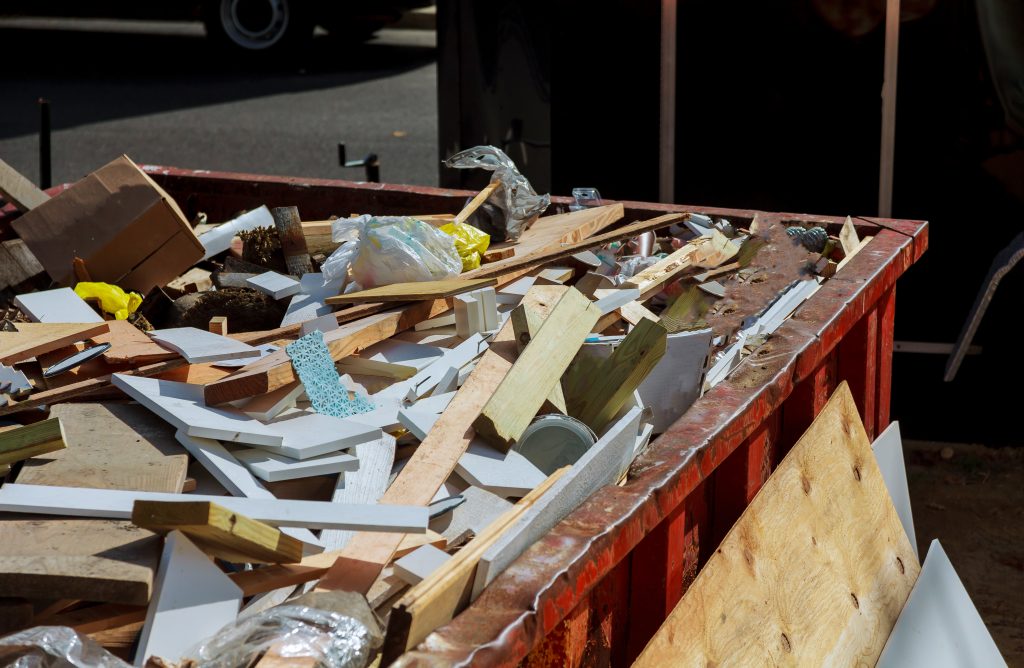Clearing out clutter can feel overwhelming, yet approaching junk removal with recycling in mind transforms the process into a more responsible endeavor. When you consider what can be reused or repurposed, each item becomes an opportunity to reduce environmental impact. Materials like metals, plastics, glass, and paper often hold surprising potential for recovery. Sorting these items before disposal minimizes landfill contributions and ensures that recyclable components return to the production cycle. Beyond environmental benefits, mindful recycling can also create a sense of accomplishment, knowing your efforts help conserve resources.
Establishing a system for separating recyclables from non-recyclables streamlines the process. Creating dedicated bins or areas for specific materials encourages consistent sorting and reduces confusion. Many items, even those seemingly worn out, retain value in recycling streams. Electrical appliances, cardboard boxes, and certain plastics can all find new life if processed properly. Integrating these practices requires minimal extra effort but offers long-term rewards for both the environment and your home’s organization. Awareness and consistency make recycling during junk removal not just feasible, but highly effective.
Planning Ahead to Maximize Recycling Potential
A successful recycling-focused removal begins with strategic planning. Visualizing the steps before starting helps identify which items can be salvaged and which require disposal. Categorizing junk into separate groups based on material types, usability, and condition allows for efficient sorting during the cleanout. This proactive approach prevents valuable recyclables from being discarded inadvertently and saves time when transporting items to proper facilities. Planning also involves researching local recycling guidelines and drop-off locations, ensuring that efforts align with municipal standards. Taking the extra moment to map out the process can dramatically increase the volume of material diverted from landfills and demonstrate a thoughtful approach to junk removal.
Preparation also extends to gathering necessary supplies and tools. Sturdy bins, protective gloves, and reusable bags facilitate organized collection, making the process smoother and safer. Clearly labeling containers avoids confusion and prevents accidental contamination of recyclables. Moreover, involving family members or helpers in the planning stage promotes shared responsibility and awareness. A well-laid-out plan fosters efficiency, reduces stress, and ensures that recycling is not an afterthought but an integral part of the junk removal experience.

Identifying Recyclable Materials During Cleanouts
Recognizing which items qualify for recycling is a crucial step in effective junk removal. Metals such as aluminum and steel, plastics marked with recycling codes, paper products, and glass containers are common examples. Electronic waste, including old computers, phones, and televisions, often contain recoverable components that should never reach a landfill. Identifying these materials during a cleanout prevents the unintentional disposal of items that could re-enter the manufacturing cycle.
Familiarity with local recycling rules enhances the sorting process. Some facilities accept mixed recyclables, while others require separation by type. Keeping a reference guide nearby during cleanouts reduces mistakes and contamination. Additionally, certain items require special handling, such as batteries, paints, and chemicals, which must be transported to designated collection centers. Awareness of these distinctions protects both the environment and your personal safety.
Sorting Junk Effectively for Environmental Impact
Efficient sorting is at the heart of successful recycling during junk removal. Establishing clear categories—metal, paper, plastic, glass, and electronics—simplifies the process and prevents contamination. When items are separated correctly, recycling centers can process them more quickly and effectively, amplifying their potential reuse. Using color-coded bins or labeled bags enhances visual organization and encourages consistent behavior. Sorting also allows for the detection of items that may still be functional or valuable for donation, reducing unnecessary disposal.
Sorting is not only about categorizing materials but also about maintaining cleanliness and safety. Broken glass, sharp metal pieces, and electronic components require careful handling to avoid injury. Wrapping or securing hazardous items ensures they can be transported safely to the appropriate facility. Implementing these measures during sorting reduces stress and prevents accidental damage. Additionally, dividing items based on recyclability supports better decision-making about disposal and reuse.
Donating and Reusing Items Beyond Recycling
Recycling is only one avenue for managing unwanted items, as donation and reuse offer meaningful alternatives. Furniture, clothing, electronics, and household goods in usable condition can find new homes, reducing waste while supporting community needs. Charitable organizations and thrift stores often accept a wide range of items, extending their lifespan and providing value to others. Considering donation alongside recycling broadens the impact of a cleanout, turning personal decluttering into a socially beneficial endeavor.
Reusing materials in creative ways also enhances sustainability during junk removal. Repurposing old furniture for DIY projects, transforming containers for storage, or using scrap wood for crafts gives items a second life. This approach reduces consumption, encourages innovation, and emphasizes resourcefulness. Integrating donation and reuse into the cleanup routine complements recycling practices, creating a multi-layered strategy for waste management.
Handling Electronics and Hazardous Waste Responsibly
Electronic and hazardous waste require special attention during junk removal. Items such as batteries, fluorescent bulbs, paints, and chemicals contain substances that can harm the environment if disposed of improperly. Recycling electronics involves retrieving valuable metals and components while preventing pollution from harmful chemicals. Many communities offer specialized collection programs and drop-off points to manage these materials safely.
Proper storage and transport of hazardous materials are vital for safety. Sealing containers, labeling contents, and avoiding mixing incompatible substances prevent accidents and contamination. Transporting these items to certified recycling centers guarantees compliance with environmental regulations and reduces the ecological footprint of your junk removal project. Awareness and diligence in handling hazardous and electronic waste reflect a commitment to sustainable practices.
Collaborating with Local Recycling Programs
Partnering with local recycling initiatives amplifies the impact of your efforts. Municipal programs and private facilities provide structured pathways for diverting recyclables from landfills. By leveraging these resources, you gain access to specialized services, guidance, and convenient drop-off locations. Collaborating with established programs ensures that materials are processed efficiently and in accordance with environmental standards. Engagement with community-based recycling services also creates opportunities for education, networking, and staying informed about evolving sustainability practices.
Community partnerships extend beyond logistics, fostering a sense of shared responsibility. Participating in local programs encourages accountability, provides support for handling complex materials, and showcases commitment to ecological stewardship. Residents and businesses benefit from streamlined access to recycling services, while municipalities gain improved compliance with environmental goals. Engaging with these programs transforms individual cleanouts into collective actions with measurable impact.

Reducing Waste Through Minimalist Mindset
Adopting a minimalist perspective during junk removal inherently promotes recycling and waste reduction. By evaluating which items truly hold value or necessity, you reduce the accumulation of unnecessary goods. This mindset encourages intentional consumption and emphasizes quality over quantity. As a result, fewer items require disposal or recycling, and the process of decluttering becomes more manageable.
A minimalist approach also simplifies sorting and organization. When possessions are carefully selected based on utility and enjoyment, the volume of material requiring recycling diminishes. This reduces strain on local facilities and contributes to more efficient processing. In addition, embracing minimalism fosters a conscious lifestyle that prioritizes sustainability, personal well-being, and space optimization.
Educating Yourself About Recycling Guidelines
Knowledge is a powerful tool for effective recycling during junk removal. Understanding local guidelines, accepted materials, and proper disposal methods prevents contamination and ensures compliance. Many items carry restrictions or require specialized handling, and staying informed reduces the risk of errors. Consulting municipal websites, attending workshops, or communicating with recycling centers provides valuable insights into proper procedures.
Continual learning also fosters adaptability and proactive problem-solving. Recycling standards evolve over time, and staying current ensures your removal practices remain effective. Knowledgeable individuals can navigate complex scenarios, such as managing mixed materials or identifying items eligible for donation. By investing time in education, you gain confidence in your recycling decisions and contribute meaningfully to broader sustainability efforts.
Utilizing Professional Junk Removal Services for Recycling Support
Engaging professionals can streamline recycling during extensive cleanouts. Experienced removal teams possess the expertise to sort, transport, and dispose of materials responsibly, often with access to specialized recycling channels. These services reduce the burden on individuals, accelerate the cleanup process, and ensure compliance with local environmental regulations. Professionals also provide guidance on identifying items suitable for donation, reuse, or recycling, making the process more efficient and environmentally conscious.
Working with experts also offers convenience and peace of mind. Heavy or awkward items, electronic waste, and hazardous materials can be managed safely without risk of injury or improper disposal. Professionals provide equipment, transportation, and logistical solutions that make extensive cleanouts feasible while maintaining a strong focus on sustainability. Their involvement complements individual efforts, reinforcing recycling principles while simplifying the overall task.
Integrating Recycling Into Daily Decluttering Habits
Sustainable junk removal extends beyond single cleanout projects. Incorporating recycling habits into daily routines reduces long-term waste accumulation and fosters environmental awareness. Simple practices such as separating recyclables from trash, reusing packaging materials, and responsibly discarding electronics create a lasting impact. Small, consistent actions contribute to broader ecological benefits while making future cleanouts less daunting.
Daily integration also encourages mindfulness about consumption and disposal choices. By reflecting on material utility and considering alternatives to disposal, individuals can reduce their ecological footprint and promote resource efficiency. Habitual recycling nurtures responsibility, environmental consciousness, and organization, making homes cleaner and more sustainable.
Conclusion
Recycling during junk removal requires thoughtful planning, careful sorting, and an awareness of both materials and regulations. Approaching each cleanout with intention ensures that valuable items are reused, donated, or recycled properly, reducing environmental impact. Integrating practices like separating materials, handling hazardous waste responsibly, and exploring local recycling programs amplifies the benefits, transforming clutter removal into a positive environmental action. Establishing habits that prioritize sustainability also makes future decluttering projects easier and more organized, while contributing to broader ecological goals.
For residents seeking expert assistance in Roseville, Clifford’s Junk Removal provides professional support for all junk removal needs. Their team offers guidance on responsible disposal, efficient sorting, and environmentally conscious recycling, making the process seamless and effective. Contact Clifford’s Junk Removal at 19162323588 to schedule a service that combines convenience with a strong commitment to sustainability, ensuring that every item removed is managed responsibly and in accordance with best practices.
